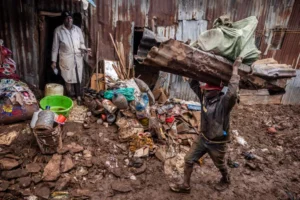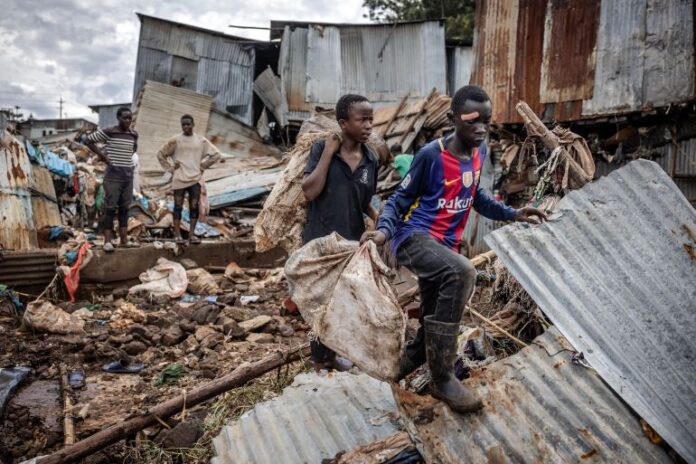Sixty-four public schools in Nairobi – nearly a third of the total number in the capital – have been “substantially affected” by the flooding, said by the principal secretary for education.
However, Deputy President Rigathi Gachagua said that “the schools will reopen as scheduled” following the mid-term holidays this month.
Kenyans have been warned to stay on alert, with more heavy rains forecast across the country in coming days as the monsoon batters East Africa.
The flooding has been compounded by the El Nino weather pattern. A naturally occurring climate pattern typically associated with increased heat worldwide, El Nino can lead to drought in some parts of the world and heavy rains elsewhere.
Meanwhile, at least 155 people have been killed in flooding and landslides in neighbouring Tanzania.

Tanzanian Prime Minister Kassim Majaliwa said on Thursday that more than 200,000 people had been affected by the disaster.
He said homes, property, crops, as well as infrastructure including roads, bridges, railways and schools, had been damaged or destroyed.
In Burundi, about 96,000 people have been displaced by months of relentless rains, the United Nations and the government said this month.
The UN’s humanitarian agency (OCHA) said in an update this week that in Somalia, the seasonal Gu rains from April to June are intensifying, with flash floods reported since April 19.
It said four people had been reportedly killed and more than 800 people were affected or displaced nationwide.
Uganda has also suffered heavy storms that have caused riverbanks to burst, with two fatalities confirmed and several hundred villagers displaced.
Late last year, more than 300 people died in torrential rains and floods in Kenya, Somalia and Ethiopia, just as the region was trying to recover from its worst drought in four decades that left millions of people hungry.




